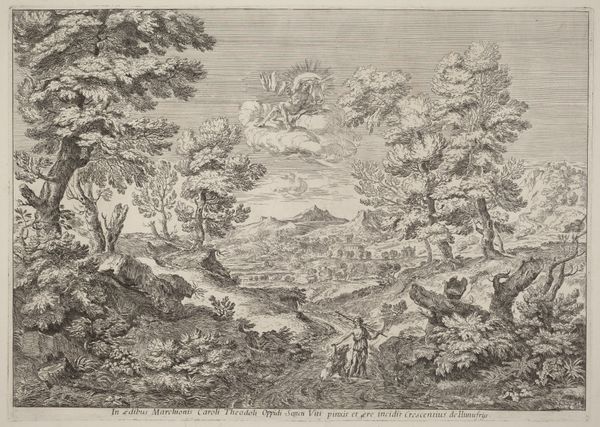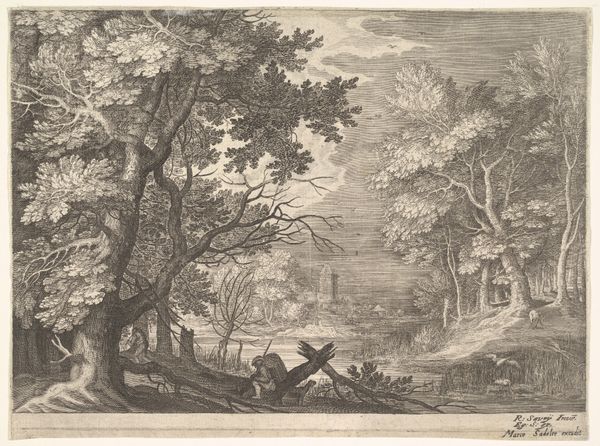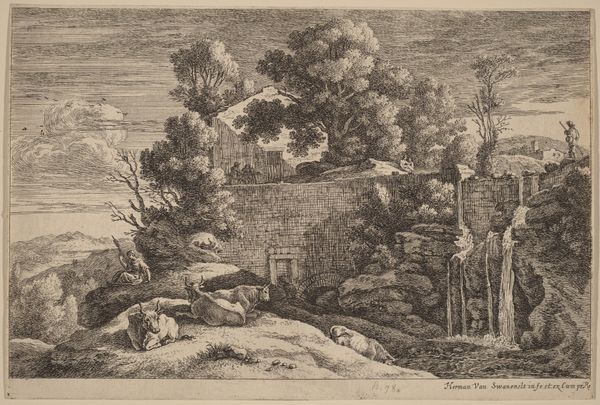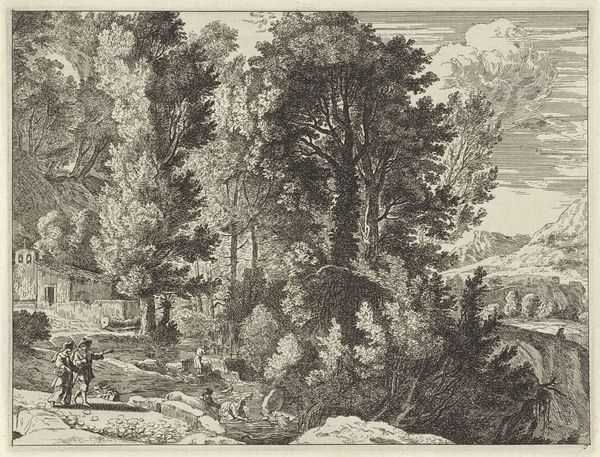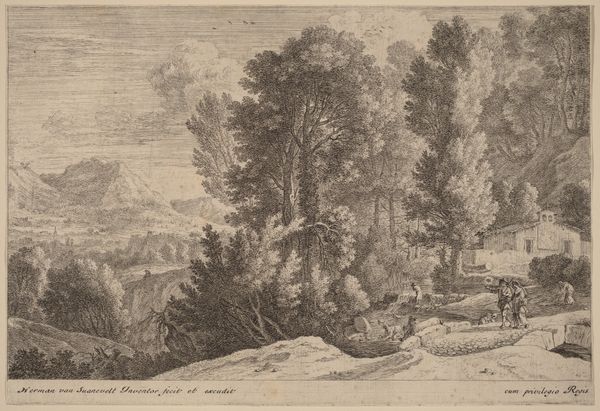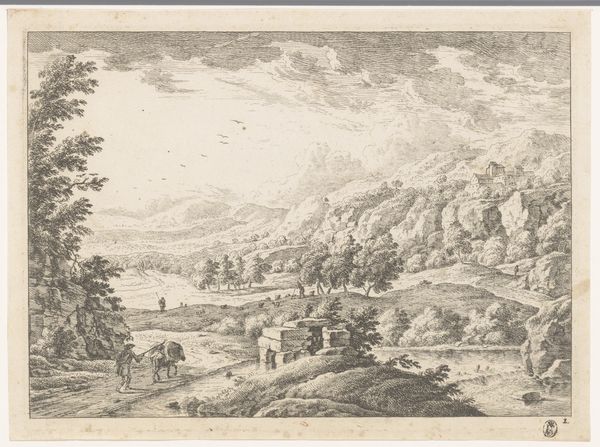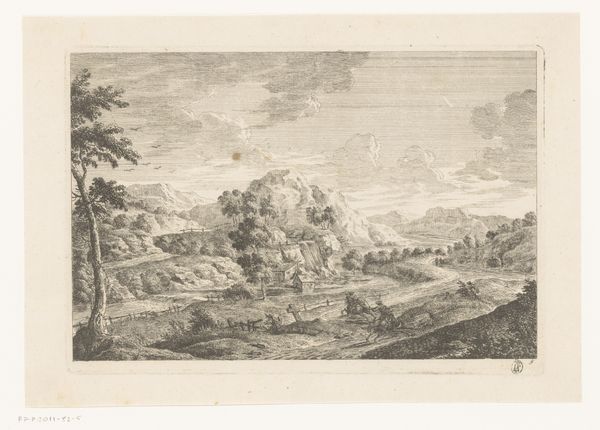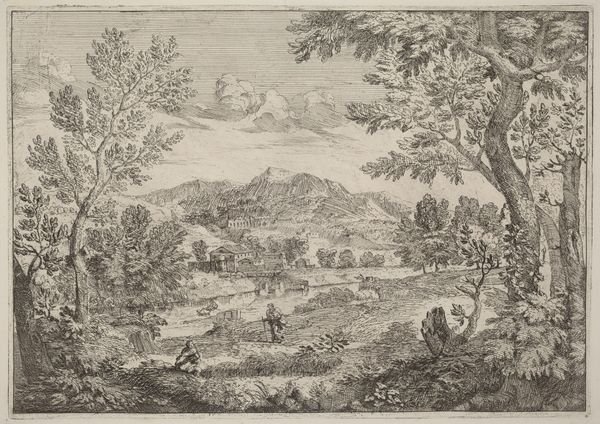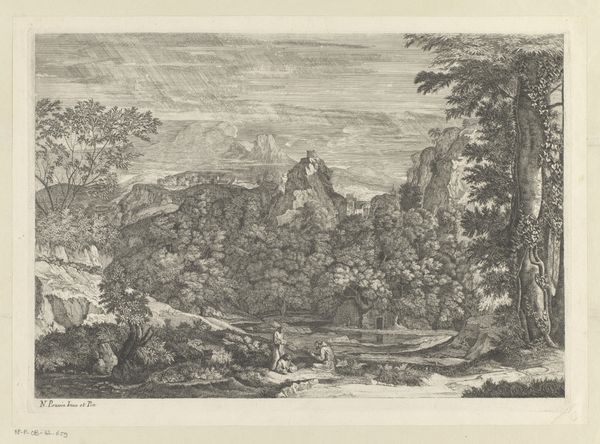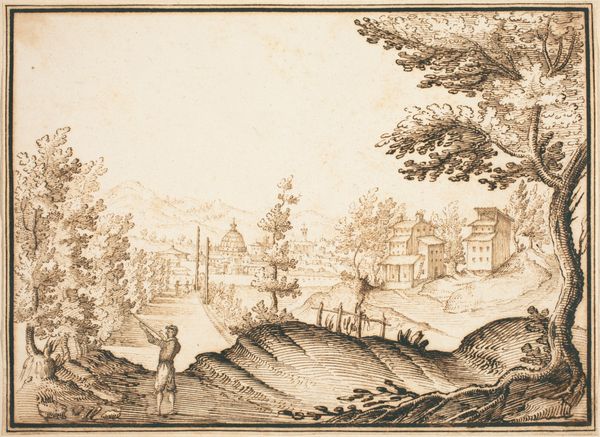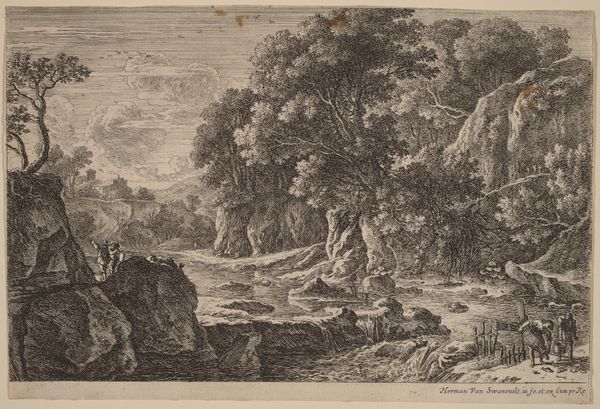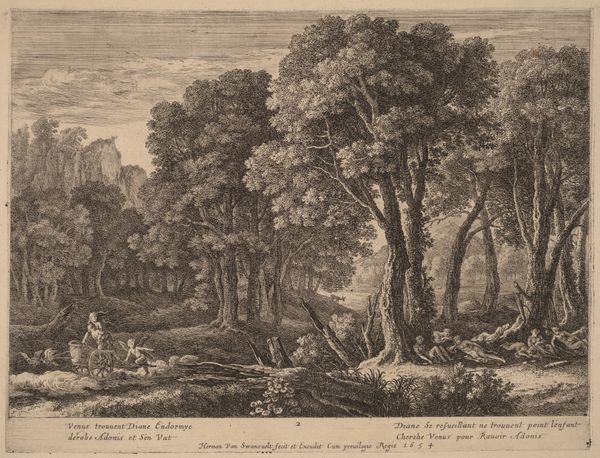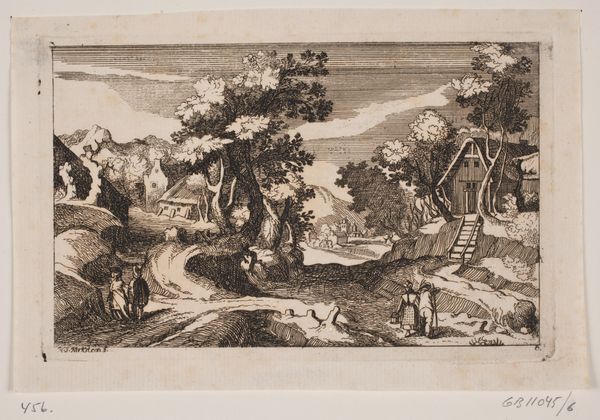
Landscape with two figures running along the bank of the river Xanto; set design from 'Il Pomo D'Oro' 1668
0:00
0:00
drawing, print, etching
#
tree
#
drawing
#
baroque
# print
#
etching
#
landscape
#
river
#
figuration
#
line
Dimensions: Sheet (Trimmed): 10 1/2 × 17 1/16 in. (26.7 × 43.3 cm)
Copyright: Public Domain
Editor: Here we have Mathäus Küsel’s etching from 1668, “Landscape with two figures running along the bank of the river Xanto,” a set design for the opera “Il Pomo D’Oro”. It's amazing how he's created this sense of depth with just lines. What symbolic weight do you see within this landscape? Curator: The river, in many cultures, functions as a boundary, a divider between worlds, or states of being. The figures running along the bank suggest a liminal journey, a movement across thresholds. This mirrors the drama of opera itself, a symbolic, heightened form of storytelling. Do you see other elements contributing to that feeling of crossing a threshold? Editor: Well, the trees on either side kind of frame the river, and there's that almost hidden bridge in the background. It’s like the landscape itself is staging the figures’ journey, isn't it? Curator: Precisely! Notice how the light seems to emanate from the background, almost drawing the figures forward. Light has been symbolically linked to knowledge, divinity, hope... In this context, running toward it could signify an active quest for enlightenment. Given that this was designed for "Il Pomo D'Oro," which translates to 'The Golden Apple', does that association resonate? Editor: Absolutely. The golden apple is always about choices and consequences. It fits that the figures would be actively pursuing something. I never would have considered all the layers just within the landscape itself. Curator: That’s the beautiful thing about visual language, isn't it? How layers of cultural memory can be embedded in something as seemingly simple as a landscape.
Comments
No comments
Be the first to comment and join the conversation on the ultimate creative platform.
